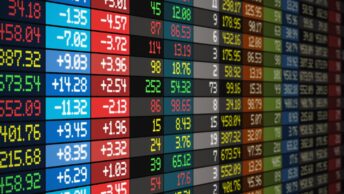Experts say that day trading is a great way to gaining financial freedom, but what about swing trading? There are some crucial differences between the two, but if you interested in trading and are uncertain about where to begin. You’re not alone.
The stock market offers various ways for people to grow their wealth, and understanding how to navigate it is crucial.
Two leading strategies are swing trading vs. day trading, each with unique features that suit different financial goals and lifestyles.
Let’s delve into these trading methods to help you make an informed decision.
Unlocking the Secrets of Swing Trading
Swing trading involves buying and holding onto assets like stocks or commodities for an extended period, usually ranging from several days to weeks. The aim is to take advantage of short-term fluctuations in price.
The cornerstone of swing trading is its longer holding period. This enables traders to steer clear of daily market volatility. In return, it leads to fewer but potentially more profitable trades.
Consider a stock that you’ve observed rising and falling in a consistent two-week cycle. You decide to buy when the price is low and wait.
Sure enough, two weeks later, the stock’s value has risen, allowing you to sell for a profit. You’ve just used swing trading to seize a trading opportunity.
Decoding the World of Day Trading
Day trading is a different beast altogether. Here, traders buy and sell assets like stocks or cryptocurrencies within the same trading day. The goal is to capitalize on small price changes that occur during daily market hours.
The holding period for day trading is extremely short; often just minutes or hours. This leads to frequent trades and requires constant attention to the market. However, the benefit is that you’re not exposed to the risks of overnight price changes.
Swing Trader vs. Day Trader: The Holding Period Showdown
The length of the holding period directly impacts the kind of risks you’ll face and the trading opportunities you’ll have. In swing trading, you’re taking on the risk of overnight market changes, but you have the chance to gain more from longer-term trends. In day trading, you make frequent trades based on intraday price movements, with the trade-off being that you must constantly monitor the market.
Understanding the key differences in holding periods between swing trader vs. day trader can help you choose the trading style that best fits your:
- Lifestyle
- Risk tolerance
- Financial goals
Whether you prefer the slower pace of swing trading or the quick action of day trading, you’re now equipped to make a more informed decision.
Swing Trader vs. Day Trader: Which Is Right for You?
In today’s bustling market, the choice between being a swing trader vs. day trader can feel overwhelming, yet it’s a crucial decision for anyone interested in trading. Your choice ultimately depends on your financial goals, risk tolerance, and the amount of time you can dedicate to trading.
Ready to dive deeper into the fascinating world of trading? Don’t miss out on more insightful tips and strategies from Figuring Out Money. Take a look at our YouTube channel to expand your knowledge and make a well-informed choice between swing trader vs. day trader.







